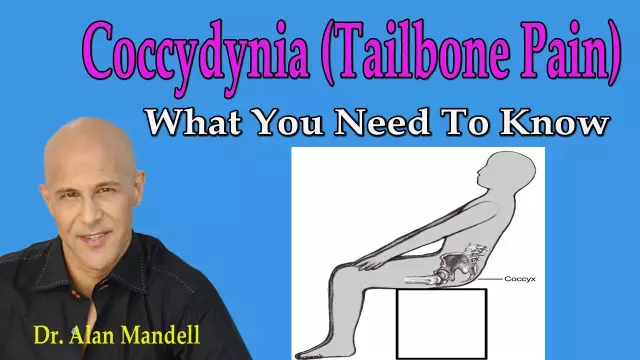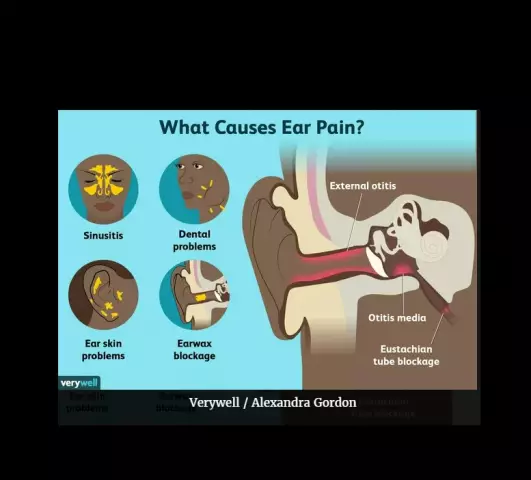- Author Rachel Wainwright [email protected].
- Public 2023-12-15 07:39.
- Last modified 2025-11-02 20:14.
Causes of pain in the tailbone

Several years ago, a large-scale survey was conducted among residents of several countries, in which they asked to answer one question: what kind of pain do you experience most often? Studies have shown that the most common type of pain is back pain. The tailbone is the lowest part of the back and tailbone pain is not uncommon. More often women suffer from it, but here it should be borne in mind that we are talking about coccygodynia - coccygeal pain caused by irritation of the coccygeal nerve plexus. This is the so-called true coccygodynia - pain syndrome, in which the causes of pain in the tailbone cannot be identified.
However, most often the cause of pain in the coccyx is quite explainable pathological changes in it or the surrounding tissues. This is either osteochondrosis, or the deposition of salts in the sacrococcygeal joint, or inflammatory changes in soft tissues in the vicinity of the coccyx: rectum, perianal region, and other organs of the small pelvis. In this case, doctors do not talk about coccygodynia, since this pain syndrome is only a symptom of another disease. Coccygeal pain in women often occurs in response to prolapse of the pelvic organs, especially the uterus and vagina. This happens after the transferred birth, especially multiple births, or when a large baby was born that damaged the birth canal. In men, the causes of pain in the coccyx are often the consequences of his injuries, for example, when falling, or inflammatory diseases of the rectum,such as hemorrhoids.
Therefore, when a patient turns to a doctor with similar complaints, to identify the cause of pain in the coccyx, he is necessarily sent for urological (men), gynecological (women) and proctological examinations. And only if the examination did not reveal any inflammatory causes of pain in the coccyx, a diagnosis of coccygodynia is made.
Experts tend to believe that often true coccygodynia is due to a sedentary lifestyle. In addition to the fact that in itself a sedentary lifestyle contributes to the deterioration of the work of all components of the musculoskeletal system, salt deposits and deformation of the coccygeal bone as a result of constant pressure on it while sitting lead to compression of the sacrococcygeal plexus, which, in fact, serves the direct cause of pain in the coccyx with coccygodynia.

Pain in the coccyx is often diffuse, and sometimes radiates to the rectum, vagina, etc. They are variable in both the frequency of attacks and their duration. Most often, the pain in the coccyx is short-term, but it can be very long and painful, seriously reducing the patient's quality of life. The problem is aggravated by the fact that pain in true coccygodynia does not respond well to therapy. As a rule, anti-inflammatory drugs, pain relievers and physical therapy are prescribed, but they are not always effective. Then they resort to surgical operation - suppression of the sensitive nerves of the sacrococcygeal plexus.
Found a mistake in the text? Select it and press Ctrl + Enter.






